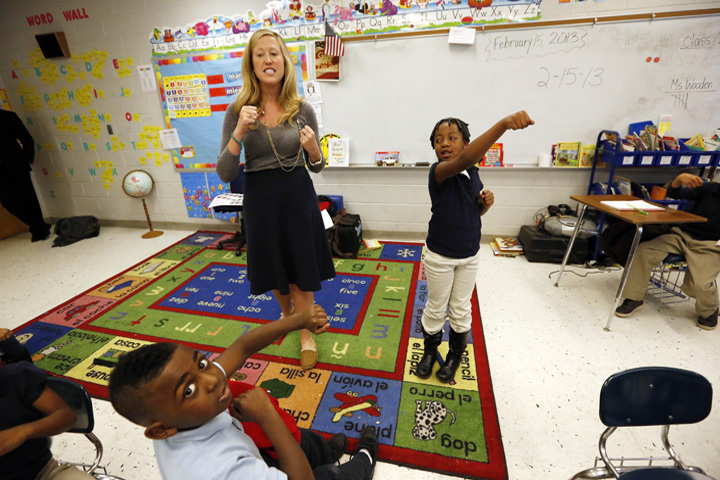Advertisement
The Languages We're Learning Now
ResumeNo jobs at home? Looking abroad? We’ll look at the languages Americans are studying today. What’s hot, what’s not and where they lead.

To put it mildly, Americans have never been the world’s greatest foreign language learners. Far from it. We’ve had a big country of English speakers and a native tongue that just kept spreading around the world. But the language map of this big, globalized planet is still a very diverse one. And intrepid Americans still keep diving in to learn. Japanese had its heyday. Russian. Arabic after 9/11. Now Chinese. And of course, Spanish all over this country. This hour On Point: Foreign language learning in the USA now. What’s hot, what’s not, and where it leads.
-- Tom Ashbrook
Guests
Marty Abbott, executive director of the American Council on The Teaching of Foreign Languages.
Michael Geisler, vice president for language schools, schools abroad and graduate schools at Middlebury College. Professor in lingustics and languages and professor of German.
John Challenger, chief executive officer of Challenger, Gray & Christmas, an international job placement consulting firm. (@ChallengerGray)
Nicole Wilson, vice president of language learning products at Rosetta Stone.
Clive Thompson, Contributing editor at WIRED. Author of: “Smarter Than You Think: How Technology Is Changing Our Minds For the Better." (@pomeranian99)
From Tom's Reading List
Forbes: America's Foreign Language Deficit --More and more students and their parents understand the need to communicate with friends and foes in other countries, and not just on our terms. Demand for and enrollment in foreign language courses is at its highest level since 1968. At public K-12 schools, course enrollment in 2007-2008 reached 8.9 million individuals, about 18.5 percent of all students; between 1995 and 2009, it increased 47.8 percent at colleges and universities.
Chronicle of Higher Education: In New Partnership, James Madison U. Offers Credit for Online Rosetta Stone Course — "With less fanfare, a similar deal was recently signed between James Madison University and the language-learning company Rosetta Stone. The public university in Virginia will grant credit to online-only students who complete a 16-week introductory conversational Spanish course produced and largely managed by Rosetta Stone, which sells one of the world’s most popular language-learning programs."
Business Insider: The 10 Easiest Foreign Languages For English Speakers To Learn --"Frisian is native to Friesland in the Netherlands, and is spoken by fewer than half a million people. Still, it is English’s closest sibling, uniquely connected in the tiny linguistic category of North Sea Germanic languages."
This program aired on January 13, 2014.